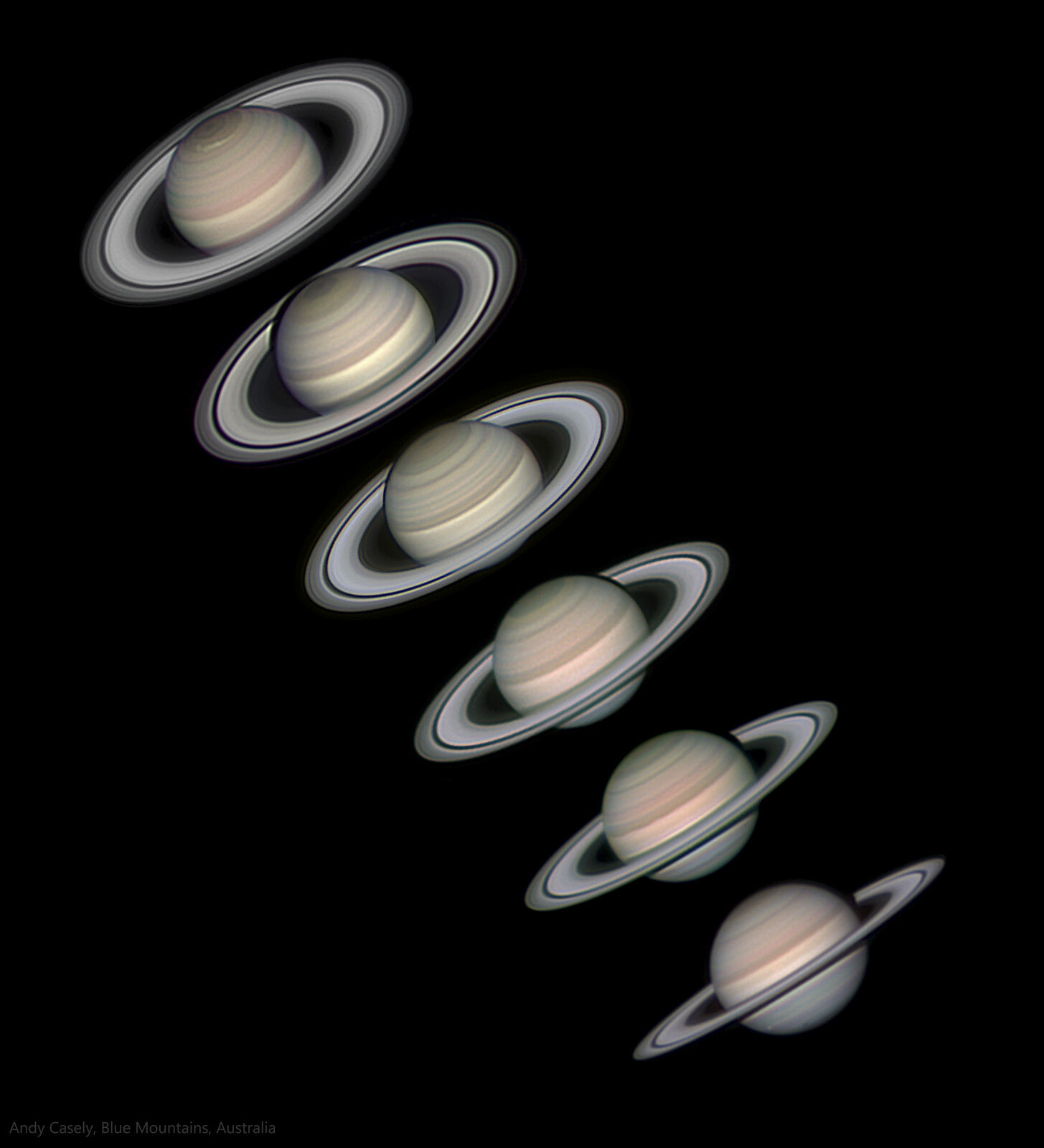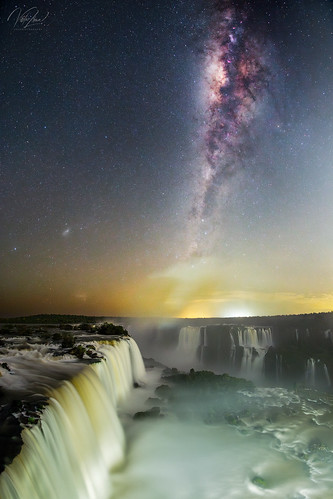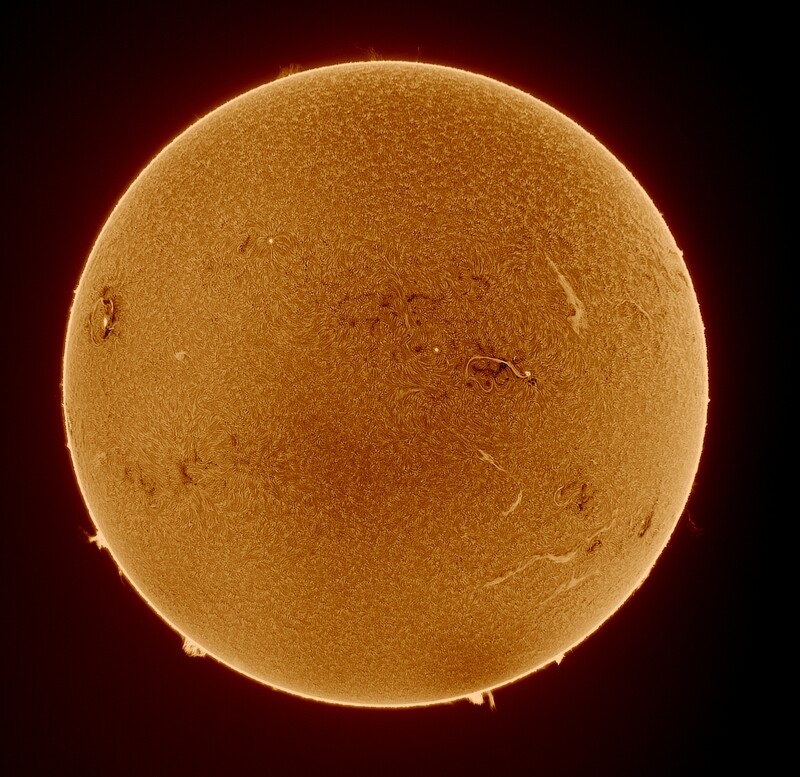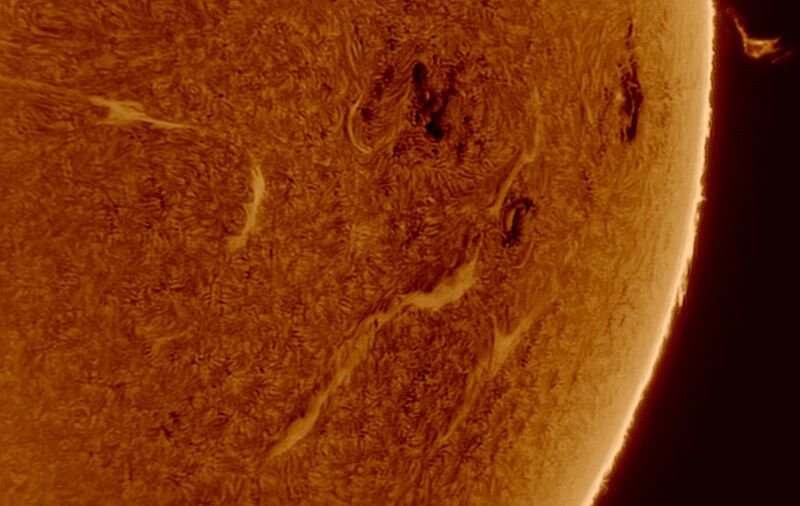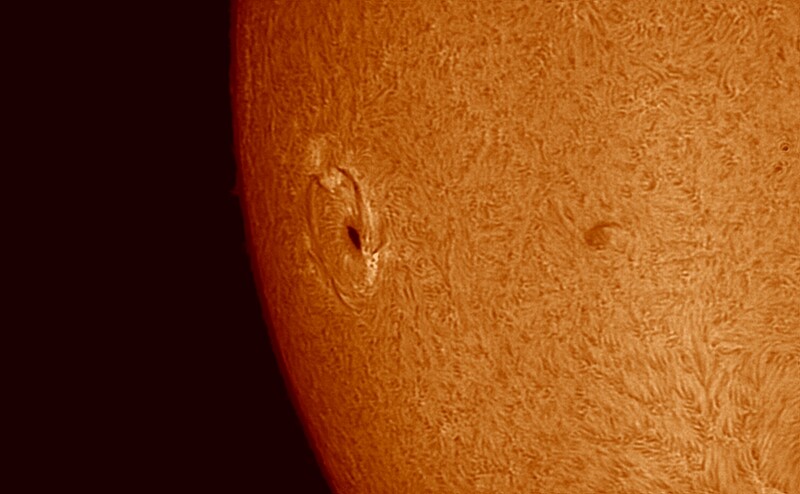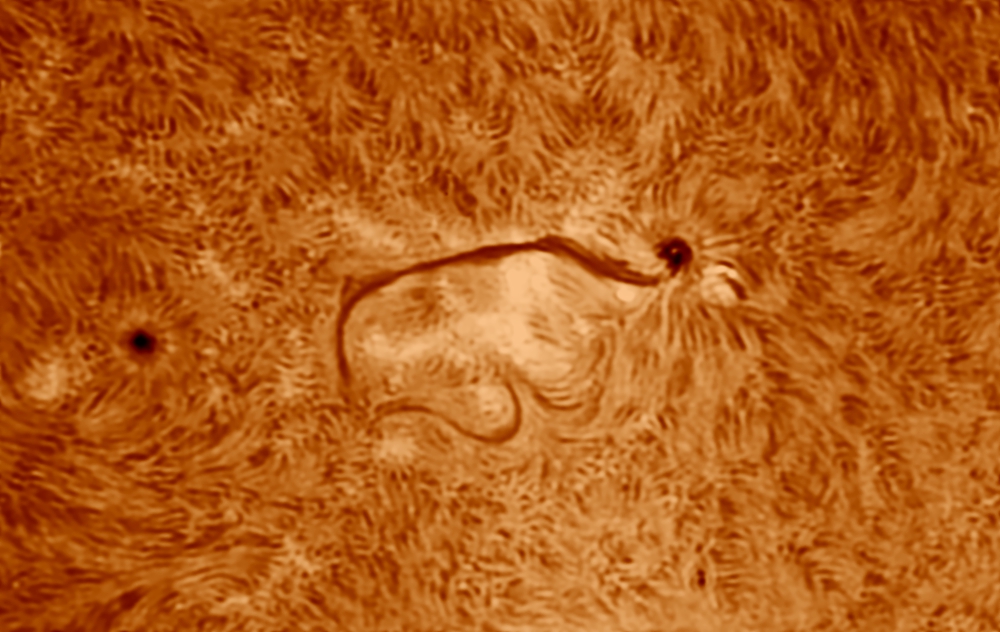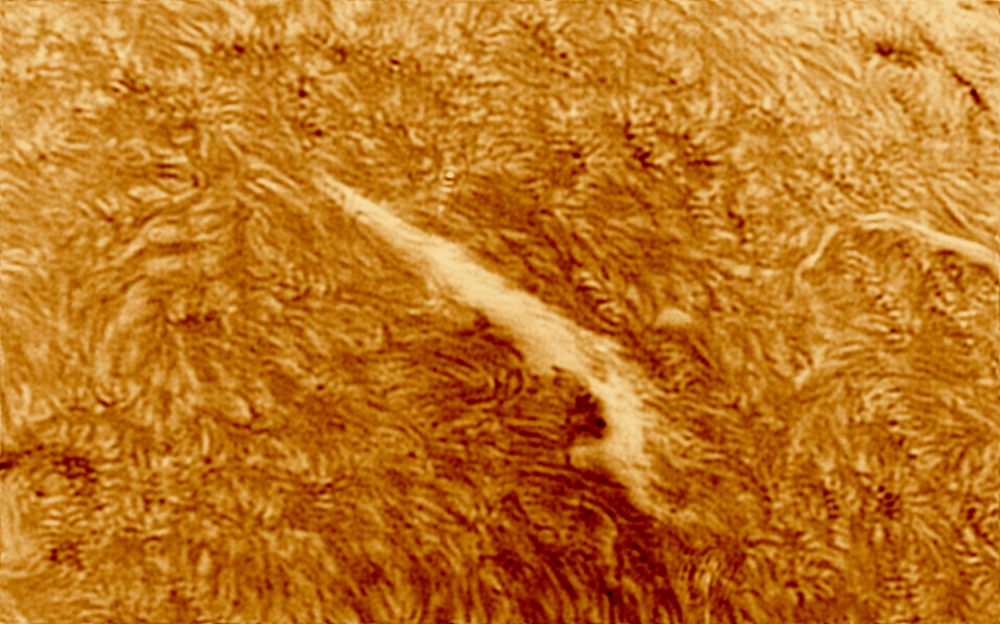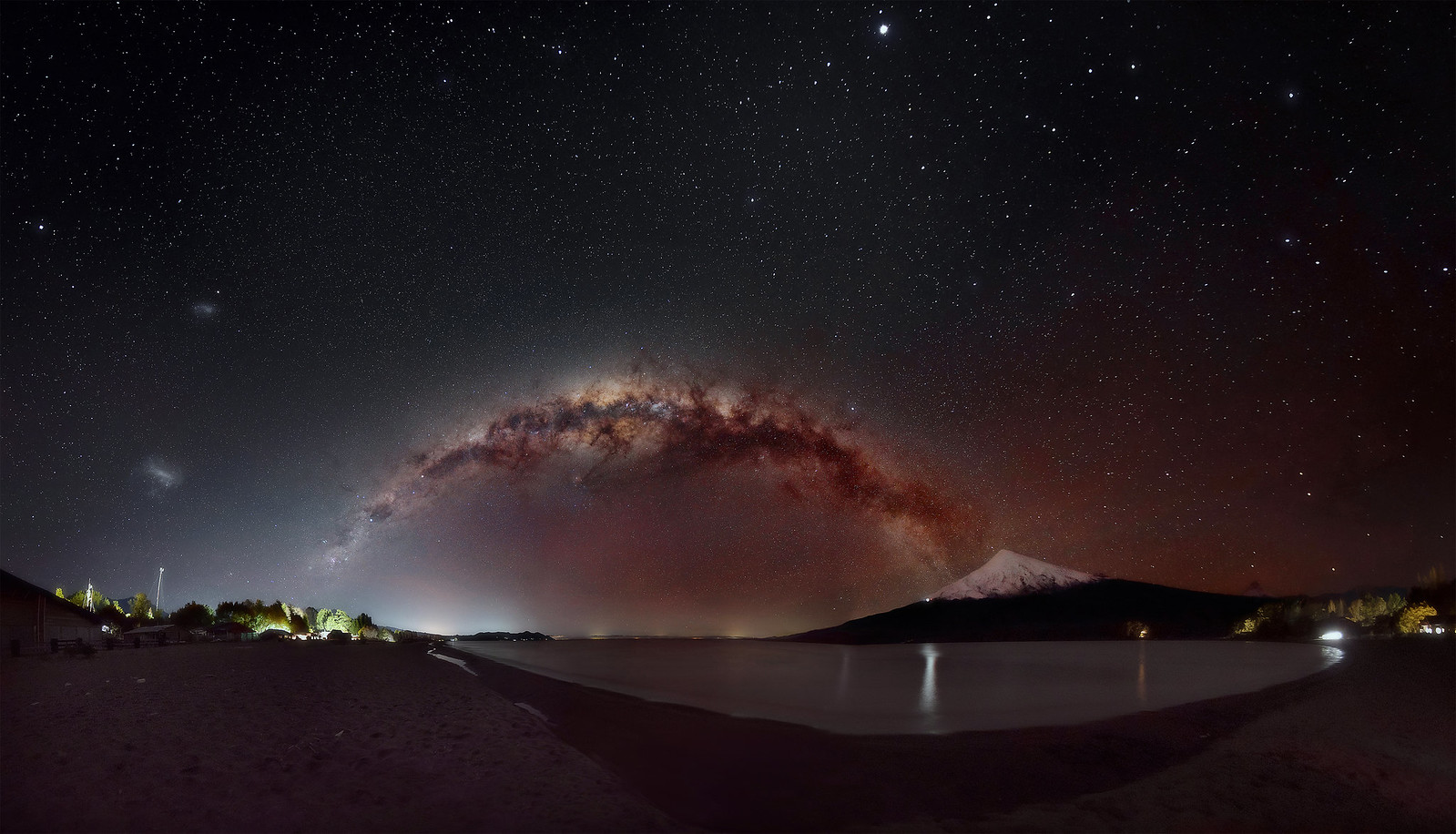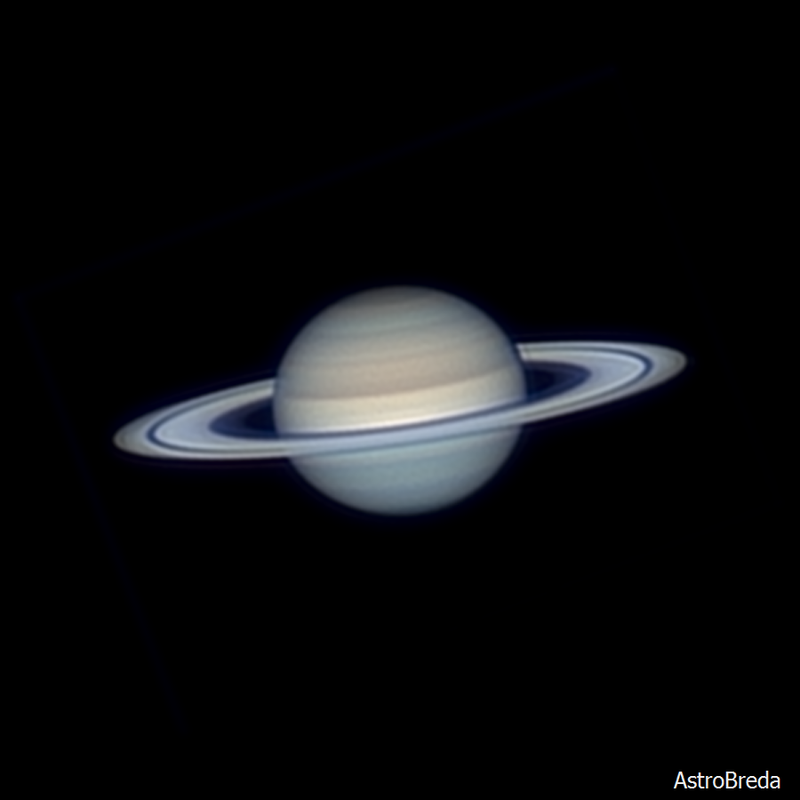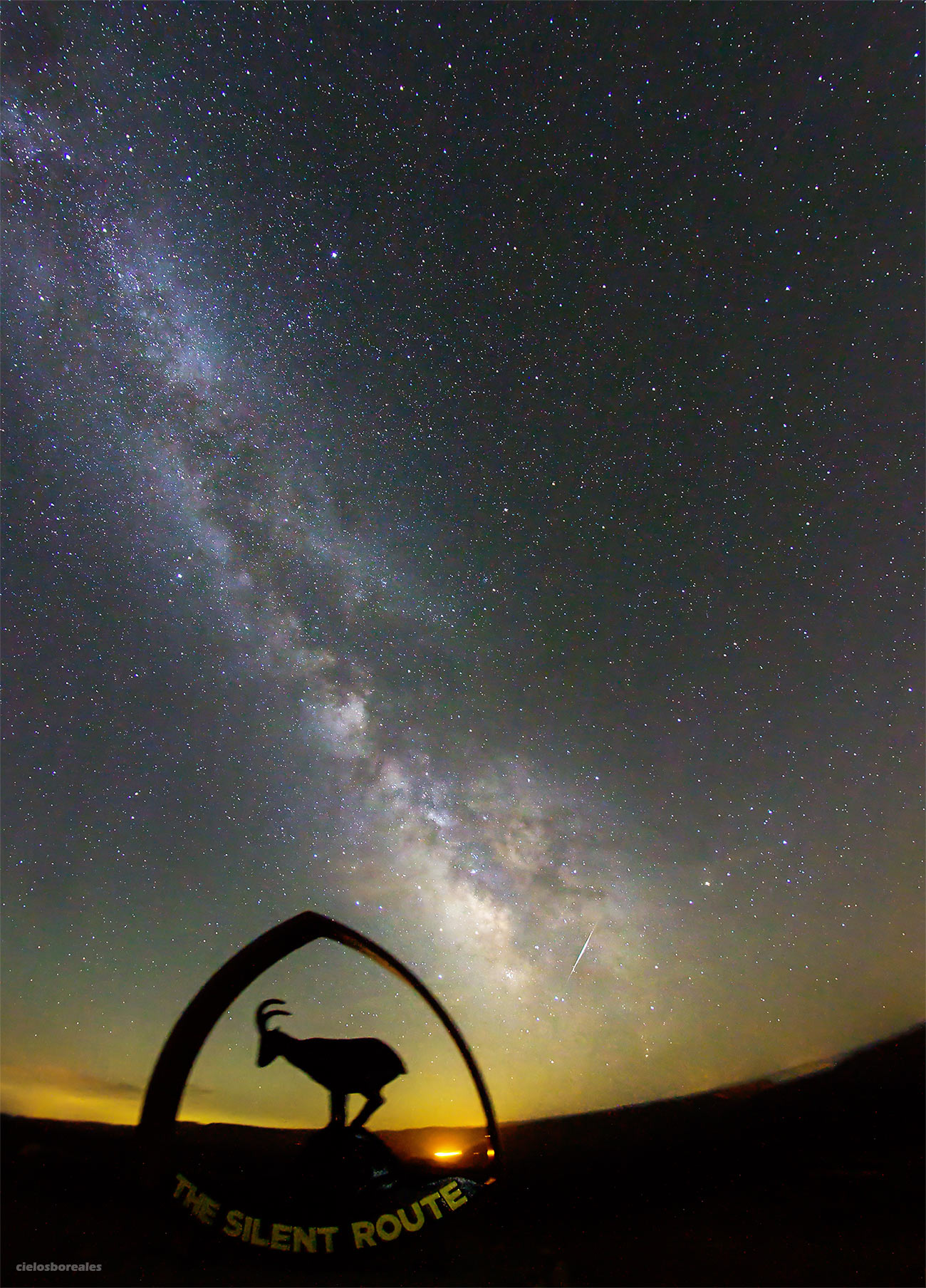
The A-1702 in Teruel, Spain, is known as "The silent route" . There are 63 kilometers of incredible landscapes for the delight of the eyes, to enjoy doing "slow driving". Sometimes we will find landscapes straight out of a western movie. It is not surprising, since the geology of this place is similar to what we will find in the State of Utah.
Millions of years ago, when there was only one continent called Pangea, this place and Utah occupied the same place. The rocks and fossils found on both sides of the Atlantic prove it.
At kilometer 17,300 we find a very peculiar viewpoint with a mountain goat state and spectacular views. From the first moment I visited it, I imagined the view of the Milky Way from here and several years later I was able to make the dream photograph come true. A meteor was also captured in one of the stacked photographs since we were in the Perseid days.
Be very careful if you plan to visit the site at night as there are many scorpions in the area, do not leave bags on the ground!
TELESCOPIO / TELESCOPE: Objetivo Samyang 8mm
CÁMARA / CAMERA: Canon EOS 600D
MONTURA / MOUNT: SW Star Adventurer
ACCESORIOS / ACCESSORIES:
AUTOGUIADO / AUTOGUIDE:
EXP: 4×180″ ISO1600
TRANSPARENCIA: 4/5 SEEING: 4/5
FECHA Y LUGAR / PLACE AND DATE: 20 de agosto de 2023, Teruel
PROCESADO / PROCESSING: DSS, Adobe Lightroom and Photoshop
Diana Sánchez & Roberto Ferrero www.cielosboreales.com



